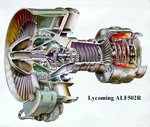No offense was taken. It is all nothing but a friendly rivalry. I will make fun of the Navy, Air Force, Marines etc. but in the end I will drink a beer with any one of them. We all serve or have served our country. That is what counts.
As for the Crash Hawk though, she has turned into a great aircraft. She had kinks at first as all new aircraft do but she molded into a fine aircraft. I have 1500 hours in her and only 1 serious emergency.
As for the Crash Hawk though, she has turned into a great aircraft. She had kinks at first as all new aircraft do but she molded into a fine aircraft. I have 1500 hours in her and only 1 serious emergency.


